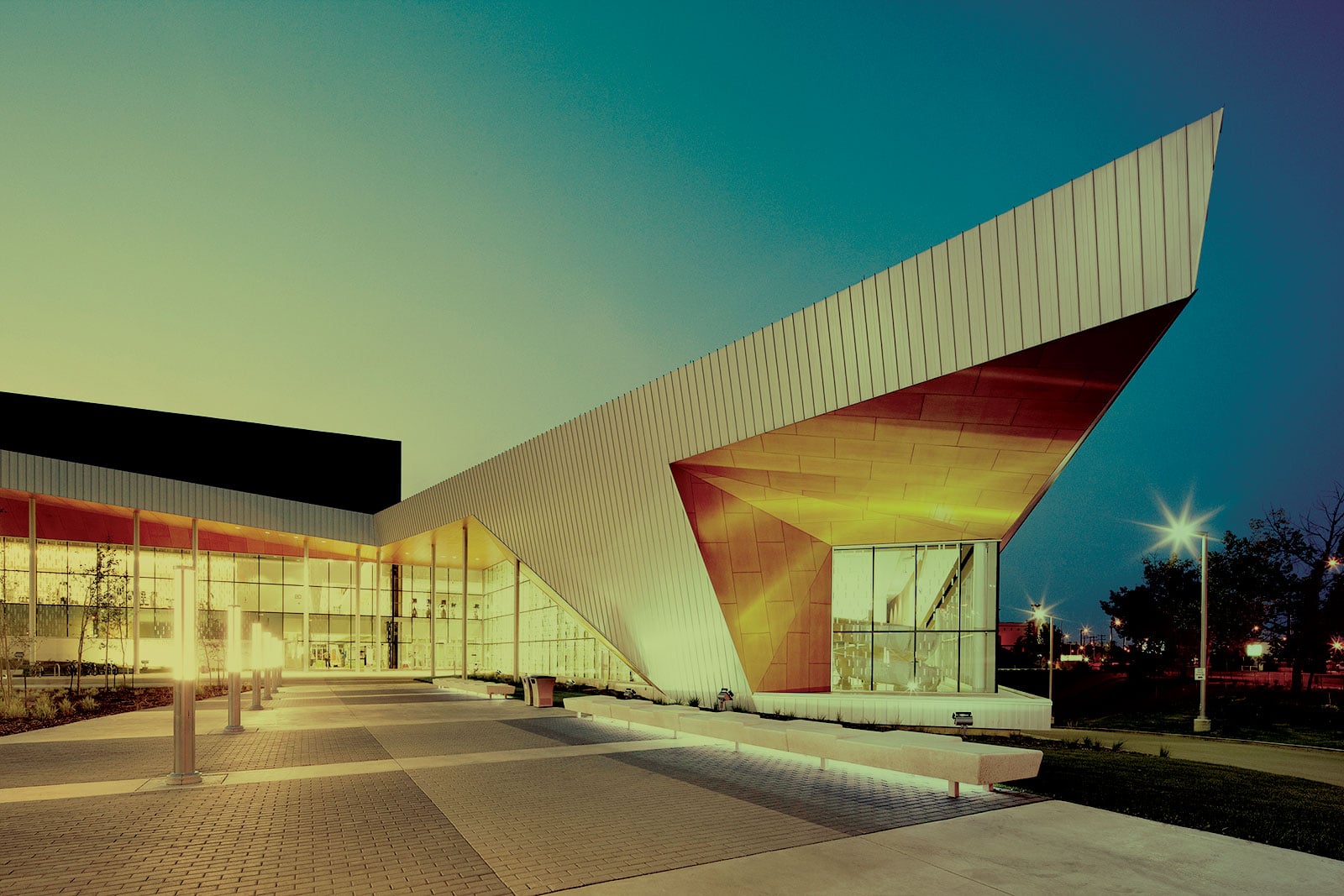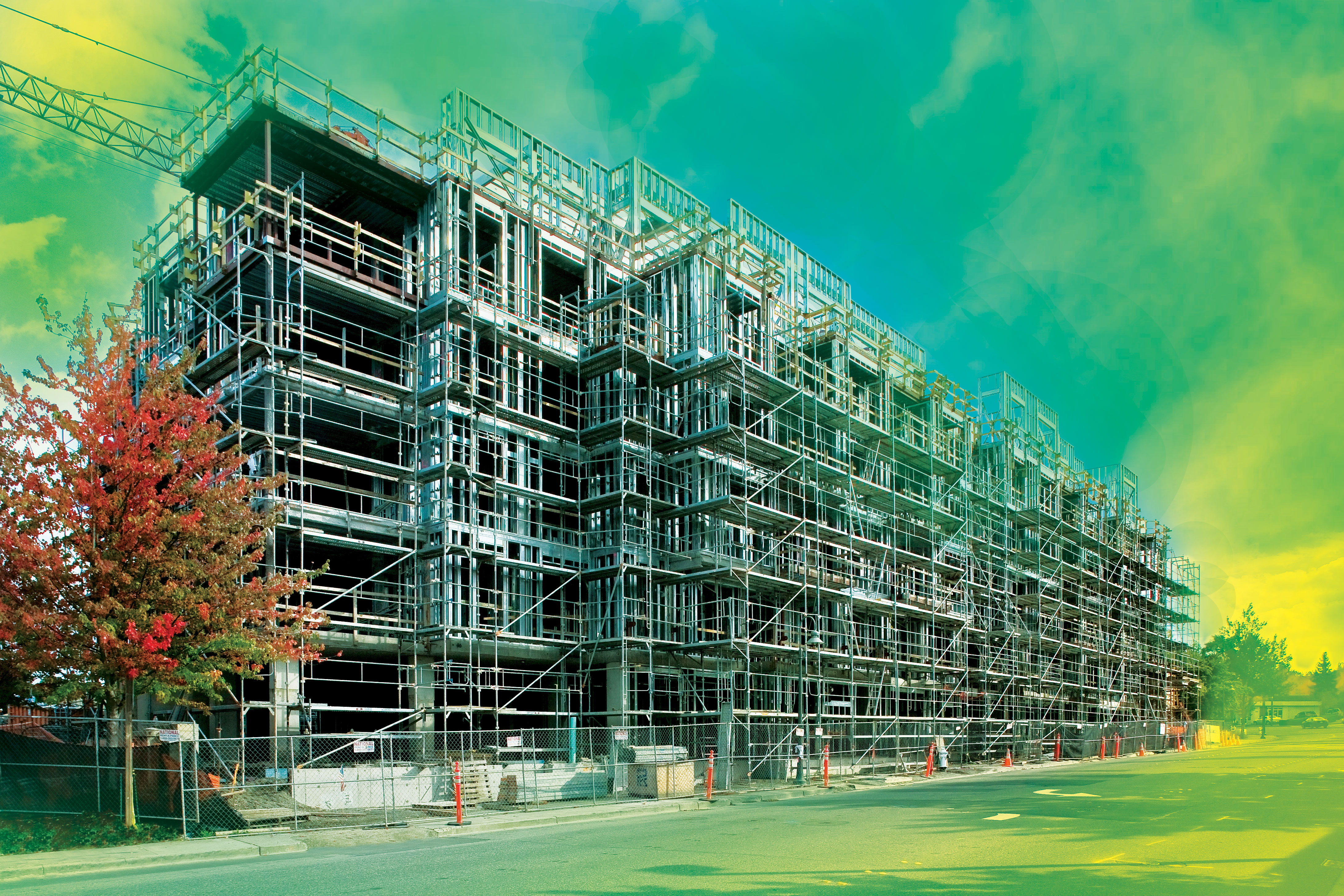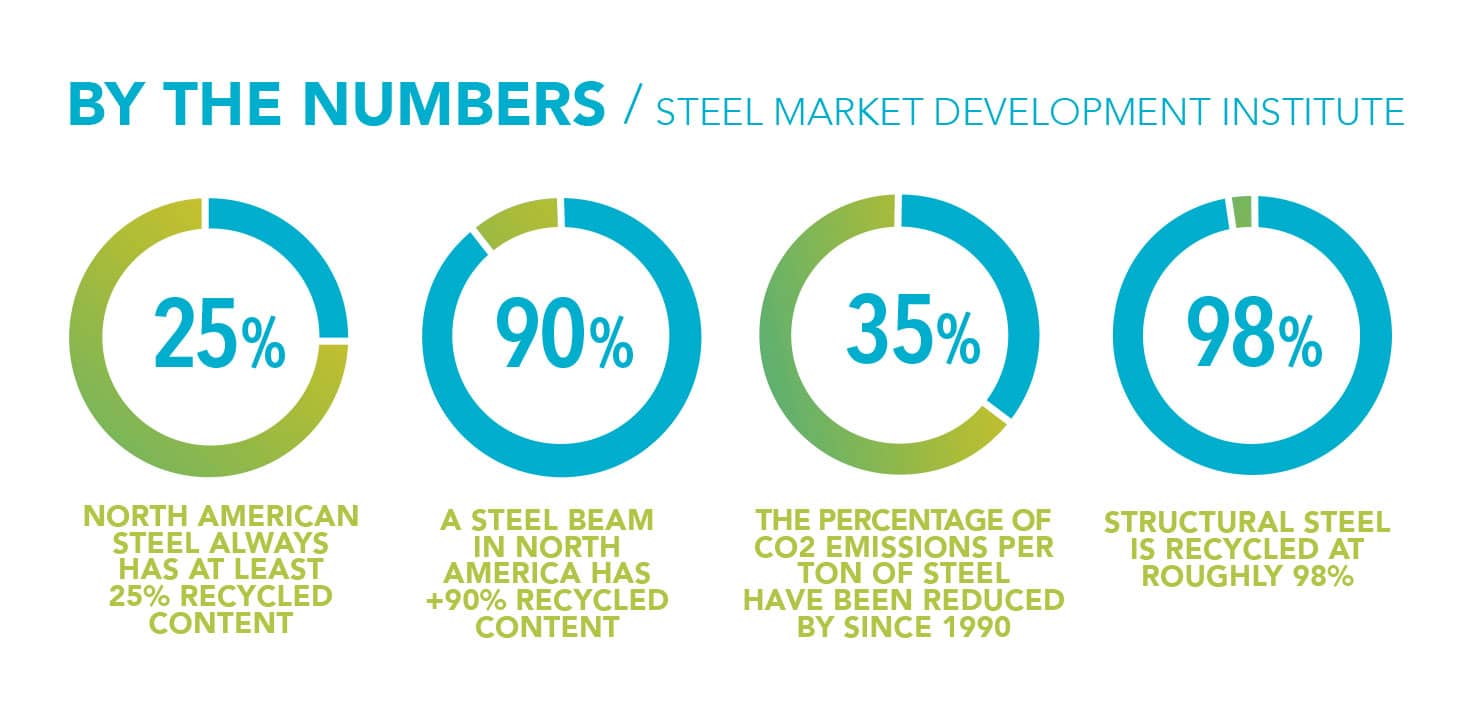The Steel Market Development Institute sets the record straight, showing steel is here to stay— and why that’s important

In Edmonton, Alberta, the Commonwealth Stadium features steel cladding from VICWEST that creates a visually stunning exterior that will look great for decades to come. [Photo: Courtesy of Canadian Sheet Steel Building Institute]
 Download a PDF of this story.
Download a PDF of this story.
To learn more, visit smdisteel.org
When you close your eyes and picture a steel mill, you may be conjuring up an image of the steel production industry of old. “Some people still have the picture of an older industry when they think of steel production,” says Mark Thimons, vice president of sustainability for the Steel Market Development Institute (SMDI) in Pittsburgh, a business unit of the American Iron and Steel Institute (AISI). But today’s steelmaking facilities employ state-of-the-art technology and are much cleaner, Thimons says, resulting in an energy use profile that has decreased significantly over the years. “Additionally, CO2 emissions per ton of steel have been reduced by over 35% since 1990.”
Leading the Way
Pittsburgh itself is in the midst of an incredible revitalization while still embracing its industrial roots, according to Brandie Sebastian, life cycle assessment manager for the Steel Recycling Institute, a business unit of AISI. “There is an impressive sustainability culture here that is highlighted by the Green Building Alliance, one of the most reputable and influential green building organizations in the U.S.,” she says. In addition, the International Living Future Institute is working to open a Living Futures “hub” in Pittsburgh that will focus on sustainable and healthy construction products.
SMDI is leading the way when it comes to educating the building construction industry and the public about steel. The organization works to grow the markets for steel in the automotive, construction, and container industries as well as in nontraditional steel markets like energy. And SMDI is made up of some serious innovators—going above and beyond when it comes to transparency and asking, “How can we be even better?”

SMDI’s Mark Thimons and Brandie Sebastian are leading the way in educating the construction industry and public at large around the importance of steel. [Photo: Courtesy of SMDI]
In the last few years, the SMDI team has been working on comprehensive EPDs, or Environmental Product Declarations. EPDs summarize the results of Life Cycle Assessments, or LCAs, which assess the environmental impacts associated with a product’s life cycle—from raw material extraction through materials processing, manufacture, distribution, use, repair, and maintenance. You might liken EPDs to nutrition labels on food packaging, as they present information to help consumers make informed decisions.
In the last few years, SMDI and other customer associations have produced EPDs for nearly all of the basic steel products used in construction, such as steel studs, decks, joists, beams, and more. You can find all of those EPDs at buildusingsteel.org and download them for free. “An architect or designer can now go to one location and find all of these steel product EPDs,” Thimons says.
EPDs are used by architects and designers to gain a better understanding of the potential environmental impacts of construction products, and thereby a better understanding of the environmental impacts of an entire building. One of the primary drivers of the demand for EPDs is LEED, which allows credits or points within the program for the use of products that have published EPDs.
SMDI also emphasizes education and working together. Twice per year, dozens of steel producers, customer association representatives, and companies that make steel products meet as part of SMDI’s Construction Sustainability Council. There, they discuss industry challenges, upcoming projects, and opportunities to collaborate toward resolving common issues.
Years ago the steel industry, like most industries, was somewhat less attuned to sustainable construction issues. The early meetings of the Construction Sustainability Council—which started roughly seven years ago—included a lot of education on developments and trends and helped raise awareness about the significance of LCAs and EPDs. These days, meetings are more collaborative. “It’s more efficient for us to share lessons learned from projects and not duplicate efforts and funding. This has been a very effective process,” Sebastian says.
Inspiring Research Continues
Currently, SMDI is working on multiple projects in the automotive and construction markets, including some whole building LCA comparisons of wood versus steel. That work should be complete in 2017. Sebastian says, ”We engage the design firm to do the building design and develop the bills of material for us. Then, the next step is to look at the steel designs and see if there are ways to optimize them.”
SMDI is also working to compare steel produced in North America with steel produced in other parts of the world to see whether their environmental impacts differ. And SMDI is collecting new steel production data as part of the Life Cycle Inventory (LCI, which measures the material flows, energy flows, and environmental releases for the production of a defined amount of a product) for North American steel production. “That’s a pretty major effort in 2017,” Sebastian says.
Life CycleAssessment
- The technique to assess environmental impacts associated with all the stages of a product’s life—from raw material extraction through materials processing, manufacture, distribution, use, repair, and maintenance.
Life Cycle Inventory
- Study that provides the measurement of the material flows, energy flows, and environmental releases for the production of a defined amount of a product.
EPDs
- Environmental Product Declarations are documents that summarize the results of a life cycle assessment for specific products. EPDs describe the potential environmental impacts of a product across a specified list of environmental impact categories.

[Photo: Courtesy of SMDI]
Recycle, Recycle, Recycle
When it comes to sustainability, steel can’t be beat. Each year, more steel is recycled in the U.S. than paper, plastic, aluminum and glass combined. “It’s one of the few construction products that is not only recycled routinely, but it can be 100% recycled—meaning any steel product can be recycled into any other steel product,” Thimons says. A recycled steel beam can become a car door or part of a refrigerator and so on. And it can be done so continuously, without losing strength. All new steel has some recycled content. A steel beam made in North America, for instance, has 90% to 100% recycled content. And North American steel is always made with at least 25% recycled content.
Structural steel is recycled at about 98%, whereas steel in general has a recycling rate in the high 80s. And anywhere from 60 to 80 million tons of steel scrap are recycled every year into new steel products in North America.
Looking at how the industry can continue to make strides is ongoing, Thimons says, and that’s all part of SMDI’s mission. “Steel producers are continually looking for innovative ways to increase the energy efficiency of the steelmaking process, and we are hopeful that the comprehensive collection of steelmaking LCI data will help us identify additional avenues for improvement of the environmental profile of North American steel products.

